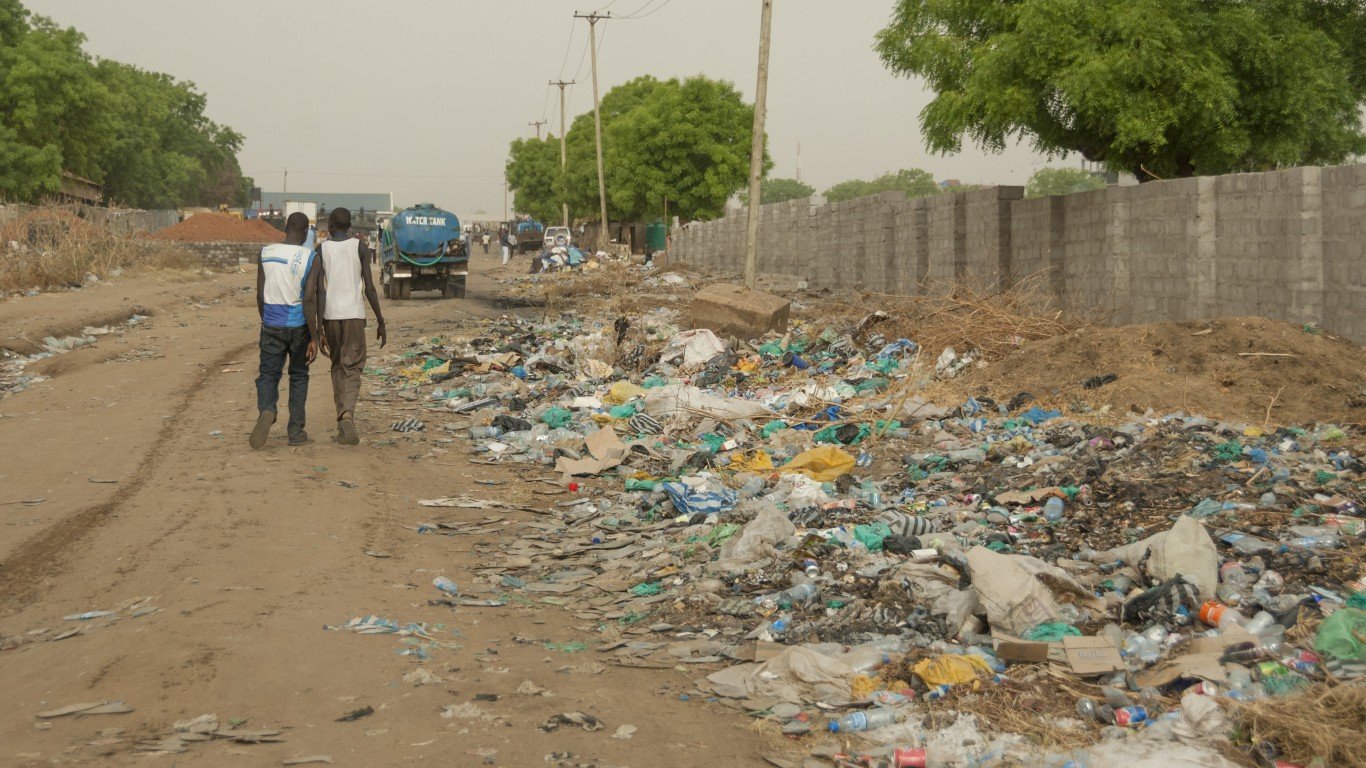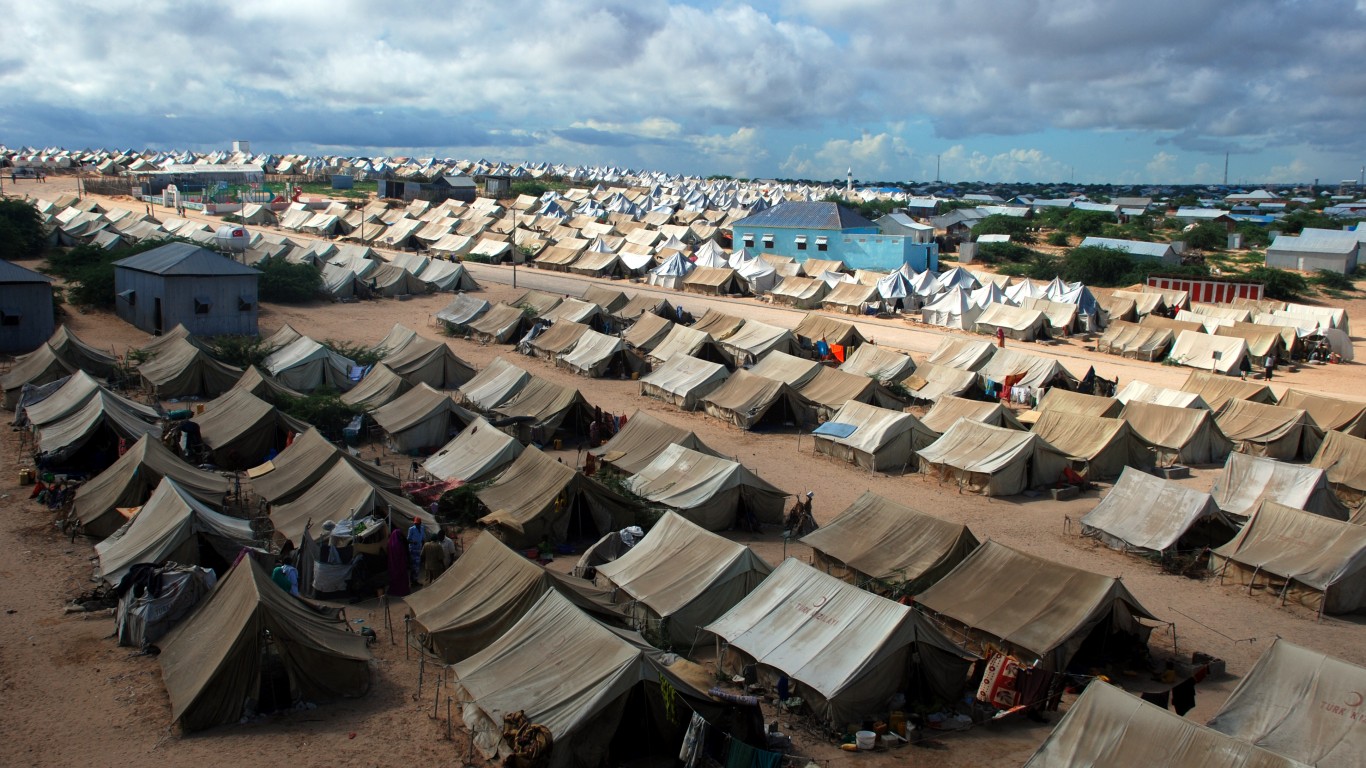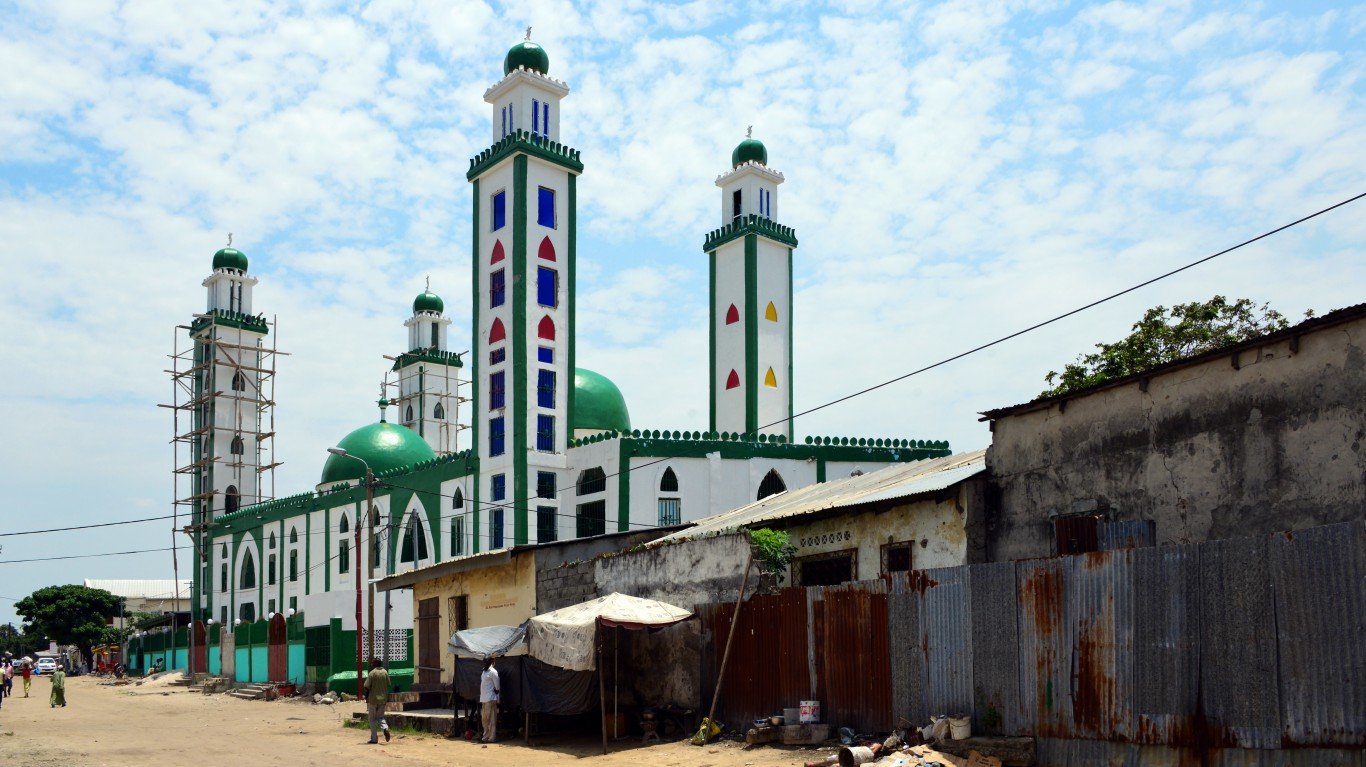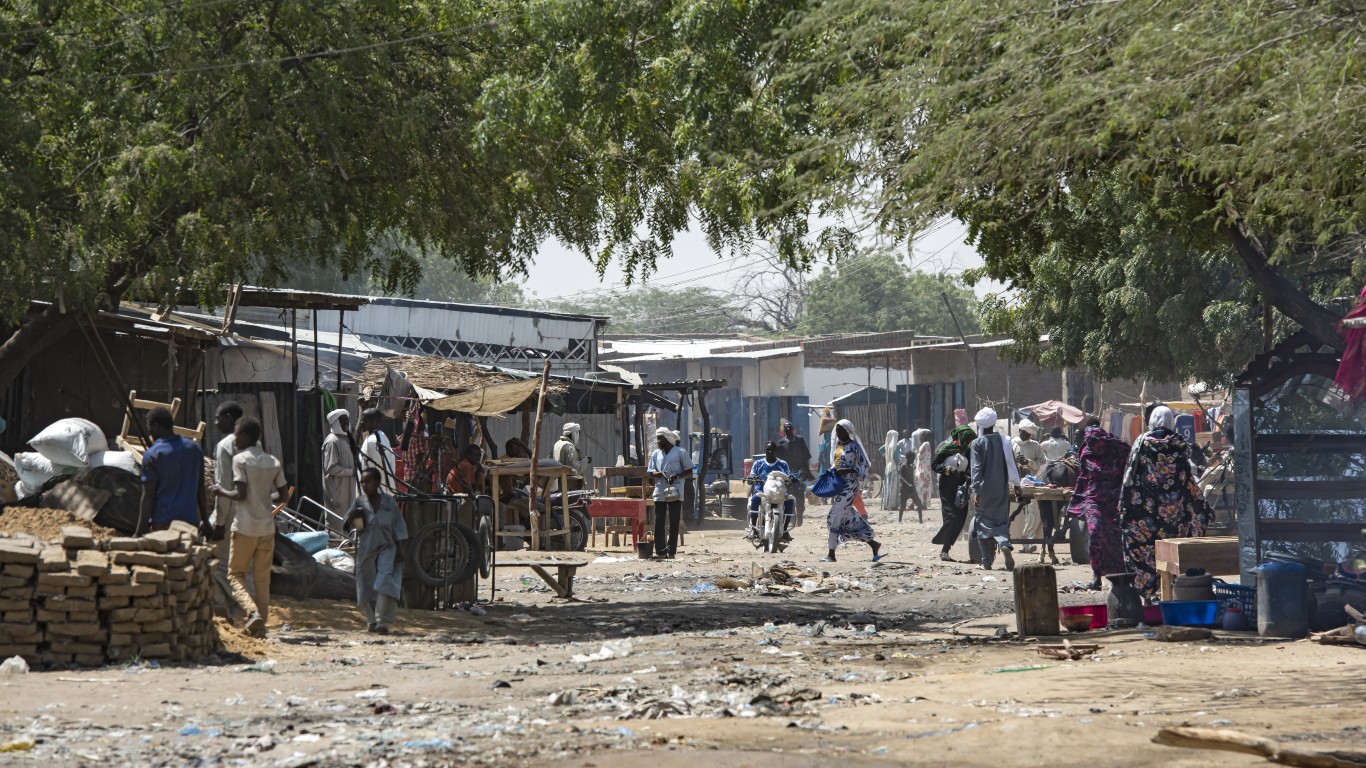
7. Uganda
> Catastrophic ecological threats: Four: Food Security; Natural Disasters; Population; Water Risk
> Global peace index, 2022 (1-5, most to least peaceful): 2.277 – #121 of 163 countries
> GDP per capita, 2021: $858 – #19 lowest of 163 countries
> Human development index: 0.5 – #166 of 191 countries
> Population, July 2021 to 2050: 45.9 million to 87.6 million – 91.1% growth
In September, Uganda was hit by a natural disaster when heavy rains caused landslides in the western part of the country. Sixteen people reportedly died. The sub-Saharan country received the most refugees in 2021, mostly from neighboring countries – at least 1 million. The country also relies on food imports from low peace countries.

6. South Sudan
> Catastrophic ecological threats: Four: Food Security; Natural Disasters; Population; Water Risk
> Global peace index, 2022 (1-5, most to least peaceful): 2.315 – #159 of 163 countries
> GDP per capita, 2015: $1,120 – #25 lowest of 163 countries
> Human development index: 0.4 – #191 of 191 countries
> Population, July 2021 to 2050: 10.7 million to 17.5 million – 62.5% growth
Three of the eight subnational areas facing the worst ecological catastrophes are located within South Sudan. That includes the Jonglei State, its most populous region with nearly 3 million people. South Sudan faces four catastrophic ecological threats and is among the countries that had the highest levels of internal displacement from both conflict and natural disasters in 2021. The country is the fifth least peaceful and among the poorest countries in the world. It also ranks absolute last on the human development index.

5. Somalia
> Catastrophic ecological threats: Four: Food Security; Natural Disasters; Population; Water Risk
> Global peace index, 2022 (1-5, most to least peaceful): 3.228 – #156 of 163 countries
> GDP per capita, 2021: $446 – #2 lowest of 163 countries
> Human development index: N/A
> Population, July 2021 to 2050: 17.1 million to 36.5 million – 113.7% growth
In 2021, a famine gripped Somalia, killing 260,000 people. Half of those who died were children. With a drought and rising food prices, the country faces another food crisis, warns Save the Children. Somalia, which faces four catastrophic ecological threats, is among the countries with the most water-related conflicts over the last two decades. Such conflicts are most likely to continue, the report notes. The country has the second lowest GDP per capita of the 163 countries considered in the report.

4. Republic of the Congo
> Catastrophic ecological threats: Four: Food Security; Natural Disasters; Population; Water Risk
> Global peace index, 2022 (1-5, most to least peaceful): 2.056 – #111 of 163 countries
> GDP per capita, 2021: $2,214 – #48 lowest of 163 countries
> Human development index: 0.6 – #153 of 191 countries
> Population, July 2021 to 2050: 5.8 million to 10.4 million – 77.8% growth
The Republic of the Congo received its independence from France in 1960. To distinguish itself from the neighboring Democratic Republic of the Congo, the country is also known as Middle Congo or Congo-Brazzaville – Brazzaville being its capital. The country is among those that face low domestic food security and low socio-economic resilience and are projected to be most affected by breakdowns in the food supply chain due to conflict.

3. Chad
> Catastrophic ecological threats: Four: Food Security; Natural Disasters; Population; Water Risk
> Global peace index, 2022 (1-5, most to least peaceful): 2.612 – #136 of 163 countries
> GDP per capita, 2021: $696 – #14 lowest of 163 countries
> Human development index: 0.4 – #190 of 191 countries
> Population, July 2021 to 2050: 17.2 million to 36.5 million – 112.2% growth
After completing a $4 billion pipeline linking its oilfields to terminals along its Atlantic Coast, Chad became an oil-producing country. Yet the country has been plagued by conflicts between the Arab-Muslim population in the north and the Christian population in the south. Still, Chad’s population is expected to explode, more than double by 2050.





